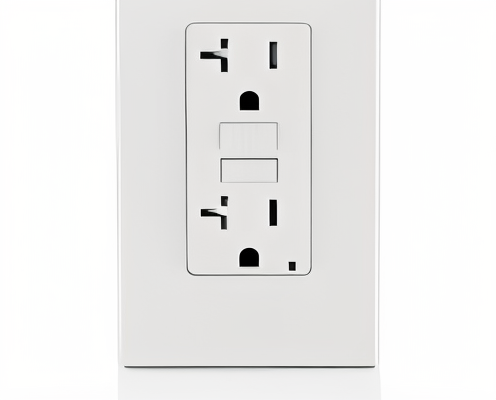In our homes, we rely on electricity every minute of every day. While modern electrical systems are designed for safety, there are two special types of devices that add an extra layer of protection: GFCI and AFCI. You might have seen these special outlets or breakers and wondered what they do.
These terms, GFCI and AFCI, might sound technical, but they are actually silent guardians that work tirelessly to prevent serious electrical accidents. They are designed to react instantly to dangerous electrical problems that regular breakers might miss.
Understanding what GFCI and AFCI devices are, how they work, and where they should be in your home is vital for every homeowner. Knowing about them can help keep your family safe from electric shocks and fires.
What Exactly Are GFCI and AFCI Devices?
Let’s break down what each of these important safety devices is designed to do in your home.
A GFCI (Ground Fault Circuit Interrupter) is mainly designed to protect people from electric shock. Think of it as a super-fast detective for electricity. If it senses that electricity is trying to flow somewhere it shouldn’t – like through water, or worse, through a person – it quickly shuts off the power. This quick action can prevent a severe shock or even save a life. You’ll often see GFCI devices as special outlets with “Test” and “Reset” buttons, or as circuit breakers in your main electrical panel.
An AFCI (Arc Fault Circuit Interrupter), on the other hand, is mostly designed to protect your home from electrical fires. It’s looking for dangerous electrical “arcs” or sparks. These tiny, unintended sparks can happen when wires are frayed, damaged, or when connections are loose. Such sparks can get very hot and ignite nearby insulation or wood, leading to a hidden fire. An AFCI device is smart enough to tell the difference between a normal spark (like when you plug in a vacuum) and a dangerous one, tripping the power instantly if it detects a problem.
How Do GFCI and AFCI Devices Actually Work to Protect Your Home?
These devices are incredibly smart and perform their safety duties in very different, yet equally important, ways.
A GFCI works by constantly checking the balance of electricity. It measures the electrical current flowing out to an appliance and the current coming back. In a healthy circuit, these amounts should be exactly the same. If even a tiny bit of electricity goes missing – for example, if it flows through a person who accidentally touches a faulty appliance while standing in water – the GFCI senses this imbalance in a fraction of a second. It then immediately cuts the power to that circuit, preventing a harmful shock. This rapid response is what makes it so effective in wet areas.
An AFCI works by listening for specific patterns of electrical noise. When wires are damaged or connections are loose, they can create a rapid series of small, unintended sparks, known as “arc faults.” These arcs produce a unique electrical signature. An AFCI device is specifically designed to recognize this dangerous signature, distinguishing it from normal electrical activity (like a motor starting). Once it detects a dangerous arc fault, it quickly “trips” the circuit breaker, stopping the flow of electricity before the small spark can grow into a full-blown fire. This helps protect against hidden fire hazards within walls.
Where Should GFCI and AFCI Protection Be Installed in a Home?
Because GFCI and AFCI devices protect against different types of dangers, they are typically installed in different parts of your home, based on safety rules.
GFCI protection is required in areas where water is present or likely to be. This is because water conducts electricity, greatly increasing the risk of severe shock. In Malaysia, you’ll find GFCI outlets or breakers typically in bathrooms, kitchens (especially near sinks), laundry rooms, garages, basements, crawl spaces, and all outdoor areas. Any outlet that could potentially come into contact with water should ideally have GFCI protection.
AFCI protection is primarily required in living areas and bedrooms. These are the places where most electrical fires related to arc faults tend to start. In modern homes or during major renovations, AFCI breakers are usually installed to protect circuits covering bedrooms, living rooms, dining rooms, family rooms, dens, hallways, and similar areas. While GFCI protects against shock, AFCI fills a critical gap by protecting against fire hazards from faulty wiring or damaged cords that might go undetected by a standard breaker.
How Can Homeowners Test and Maintain Their GFCI and AFCI Devices?
Understanding what GFCI and AFCI devices do is great, but knowing how to check them is even better. Regular testing is simple and important to ensure they are working properly.
You can easily test a GFCI outlet yourself. Look for the “Test” and “Reset” buttons on the outlet. Plug something simple, like a lamp, into the GFCI outlet to make sure it has power. Then, press the “Test” button. You should hear a click, the power to the outlet should shut off (the lamp will turn off), and the “Reset” button should pop out. If it does, the GFCI is working. To restore power, just press the “Reset” button firmly. If the GFCI doesn’t trip, or if it doesn’t reset, it needs to be replaced. You should do this test once a month.
Testing an AFCI circuit breaker is similar. You’ll find the “Test” button directly on the AFCI circuit breaker in your main electrical panel. Make sure there’s power to the circuit it protects. Then, press the “Test” button on the breaker. The breaker should trip (move to the “off” or middle position), cutting power to that circuit. To reset it, push the breaker fully to the “off” position first, and then firmly to the “on” position. If it doesn’t trip when tested, or if it doesn’t reset, it might be faulty and should be checked by an electrician. Test these once a month as well.
Conclusion
GFCI and AFCI devices are more than just technical terms; they are essential safety components that silently guard your home and family. The GFCI protects against dangerous electric shocks, especially where water is present, while the AFCI protects against hidden electrical fires caused by faulty wiring or damaged cords.
Understanding what these devices are, where they should be installed, and how they protect your home empowers you as a homeowner. By performing simple monthly tests, you can ensure these vital safety features are always working. Staying informed about your home’s electrical system is a crucial step towards a safer and more secure living environment for everyone.

